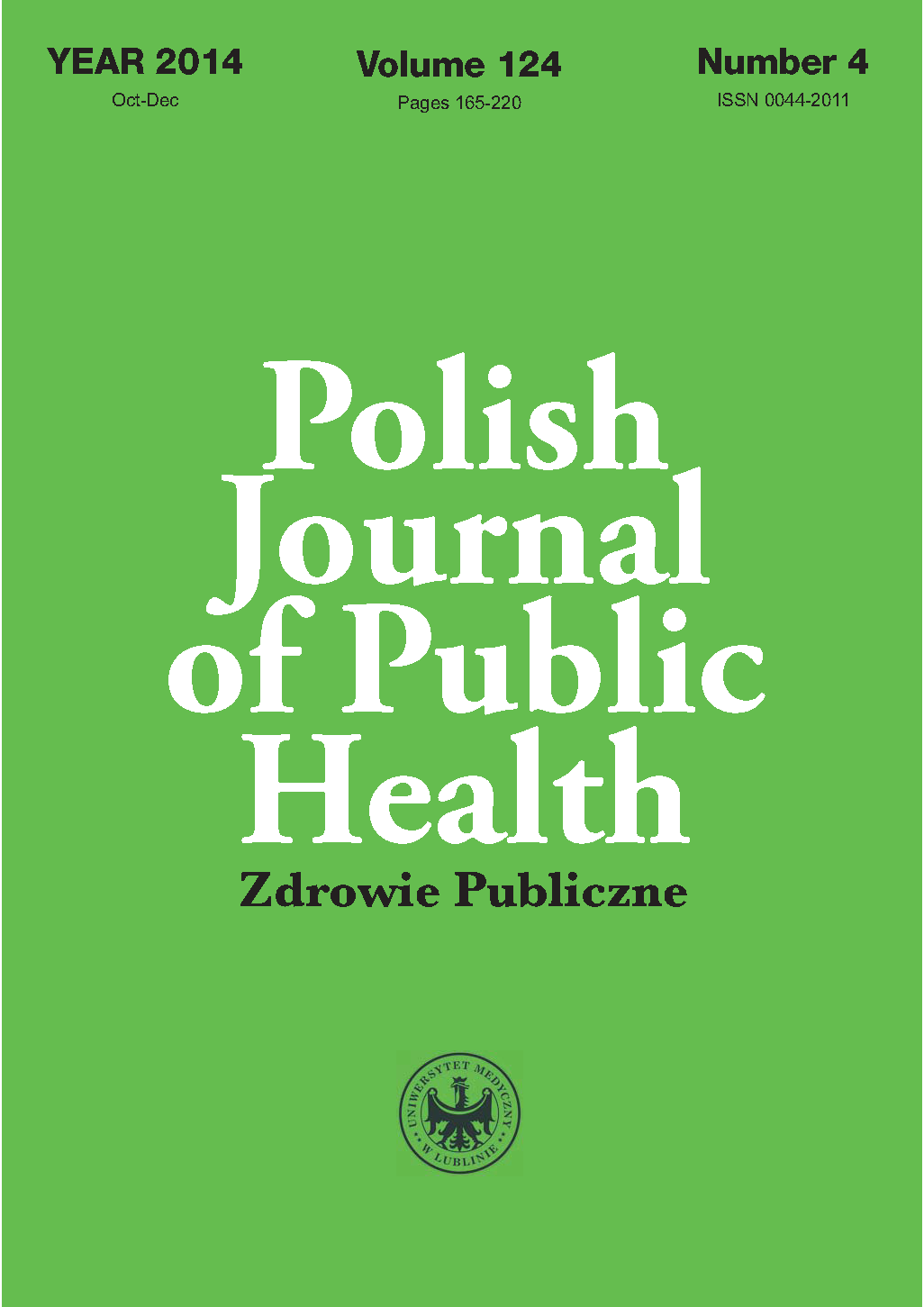The attitude of the students of the Academy of Physical Education to smoking habits
DOI:
https://doi.org/10.1515/pjph-2015-0009Keywords:
nicotine smoking, students, Fageström test, Schneider testAbstract
Introduction. Poland is among the top ten countries of the European Union displaying the highest intensity of smoking.
Aim. To evaluate the frequency and intensity of smoking, the strength of nicotine addiction and the motivation to discontinue smoking, among students of the Academy of Physical Education.
Material and methods. First, a survey involving an anonymous questionnaire (which included both the Fageström and Schneider tests), was conducted within a population of 276 students. Next, this was analyzed statistically using the Statystica 7.1 program.
Results. The initial results of this research showed that 29.71% of all respondents smoke cigarettes. Moreover, the applied Fageström test revealed that the test population was either: slightly addicted (44,72% of all respondents), moderately addicted (34.84% of all respondents), or heavily addicted (17.44%).
Conclusions. The prevalence of smoking among students of the Academy of Physical Education remains alarming. Furthermore, the negative health behaviors contribute to an adverse overview of the health of the questioned students.
References
1. Zatoński W. Rzuć palenie razem z nami. Warszawa: Centrum Onkologii, Instytut im. M. Skłodowskiej-Curie;1999.
2. Światowa Organizacja Zdrowia: Międzynarodowa statystyczna klasyfikacja chorób i problemów zdrowotnych: rewizja dziesiąta ICD-10. Tom I. Kraków: Uniwersyteckie Wydawnictwo Medyczne „Vesalius”; 1999.
3. Zygulska AL, Kowalczyk A. Palenie tytoniu jako problem medyczny i prawny. Wybrane zagadnienia. Zdr Publ.2008;118(3):341-7.
4. Klimberg A, Żarnowska I. Możliwości wyjścia z uzależnienia od nikotyny na przykładzie chorych z nowotworem płuc. Prob Hig Epidemiol. 2006;87:270.
5. Tonstad S, Johnston JA. Cardiovascular risks associated with smoking: a review for clinicians. Eur J Cardiovasc Prev Rehabil. 2006;13:507-14.
6. Zatoński W, Jankowski P, Banasiak W, et al.Wspólne stanowisko dotyczące rozpoznawania i leczenia zespołu uzależnienia od tytoniu u pacjentów z chorobami układu sercowo-naczyniowego. Uzupełnienie „Konsensusu dotyczącego rozpoznawania i leczenia zespołu uzależnienia od tytoniu”. Kardiol Pol. 2011;69(1):96-100.
7. Kołłątaj W, Kołłątaj B, Karwat ID, Piecewicz-Szczęsna H. Postawy studentów Uniwersytetu Medycznego w Lublinie wobec palenia tytoniu. Probl Hig Epidemiol. 2010;91:495-500.
8. Hędzelek M, Wnuk M, Marcinkowski JT. Jakość życia studentów eksperymentujących z narkotykami. Probl Hig Epidemiol 2009;90:415-23.
9. Gostin LO. Global regulatory strategies for tobacco control. JAMA. 2007;298:2057-9.
10. Kanicka M, Krupicka A, Krysińska M, et al. Wiedza i postawy studentów kierunku Zdrowie Publiczne Uniwersytetu Medycznego w Białymstoku dotycząca nikotynizmu. Probl Hig Epidemiol. 2010;91:164-8.
11. Boudreaux ED, Francis JL, Carmack Taylor CL, et al. Changing multiple health behaviors: Smoking and exercise. Prev Med. 2003;36:471-8.
12. Kowalska A, Rzeźnicki A, Stelmach W. Rozpowszechnienie palenia tytoniu wśród młodzieży akademickiej pierwszych lat studiów. Przegl Lek. 2009;66(10):694.
13. Siemińska A, Jansen JM, Uherek M, et al. Postawy wobec palenia tytoniu studentów pierwszego roku medycyny. Pneumonol Alergol Pol. 2006;74(4):377-82.
14. Wojtal M, Kurpas D, Sochocka L, et al. Analiza problemu palenia tytoniu wśród studentów Wydziału Lekarskiego Akademii Medycznej we Wrocławiu. Przegl Lek. 2007;64(10):795.
15. Skop-Lewandowska A, Szot W, Kolarzyk E. Ocena uzależnienia od nikotyny wśród studentów kierunków medycznych. Probl Hig Epidemiol. 2007;88:437-40.


